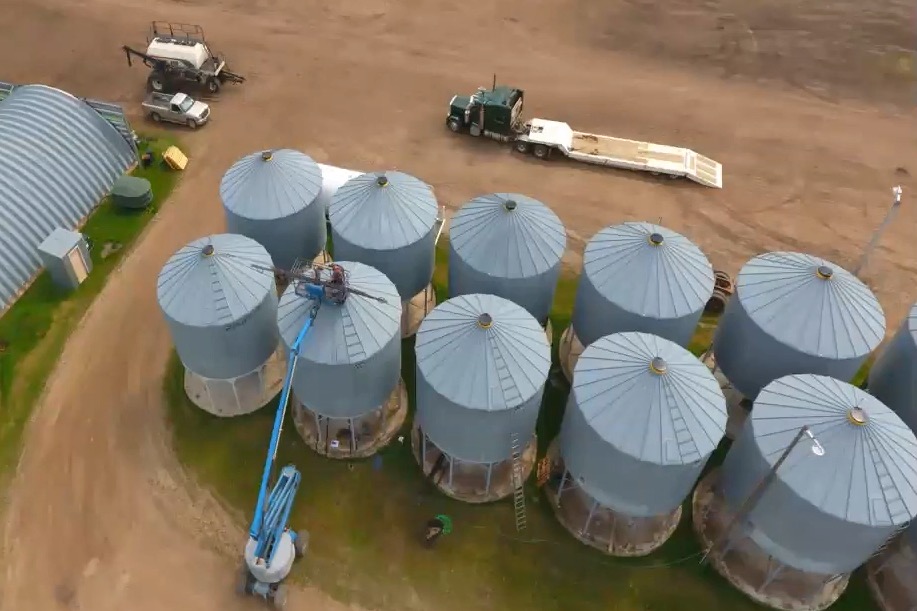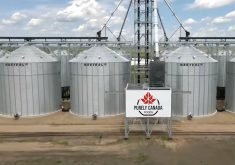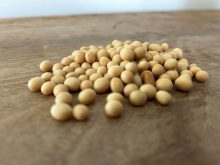Bins hold a lot more these days, and that makes it challenging to push air through small seeds like canola
When is a grain bin too big to allow for proper drying? When it comes to canola, leading researchers may now have an idea.
The Prairie Agriculture Machinery Institute (PAMI) found that commonly used conditioning fans stall when canola is piled too high in a tall grain bin. Adding an extra fan in parallel didn’t help. In fact, at a certain depth that fan was found to fail as well.
Many of today’s 20-foot and larger bins may simply be too big to allow proper drying of canola, said project lead Charley Sprenger.
Read Also

Scouting for disease in canola crops
Inspecting your canola fields for early signs of disease can save you plenty of headaches in the long run.
“A lot of the grain storage management tools we have now were developed prior to the 2000s when the average bin sizes were around 2,000 to 4,000 bushels and depths were only around 10 to 20 feet,” she said.
“Common bin sizes now are closer to 20,000 to 50,000 bushels and grain depths are more like 20 to 40 feet.”
The team found a standard 10 horsepower, low-speed centrifugal fan would stall when drying canola at depths of 22 feet or higher, putting the canola at risk of spoilage.
Higher depths increase airflow resistance and canola already has a good deal of resistance due to its small size and lack of space between seeds. If producers want to dry canola in high-depth bins, they may need high-horsepower fans, which require an upgrade to three-phase power, said Sprenger.
However, other options may be available. Different ducting systems and fan orientations might help but there’s a simpler, albeit more time consuming, alternative.
“The recommendation that we often provide is to dry (canola) down in smaller bins where it’s easier to achieve sufficient airflow with lower depths and then place it in larger bins for long-term storage if that’s necessary.”
PAMI’s study involved slowly filling a 25,000-bushel bin with canola and measuring resistance after each load. The team attempted to overcome fan limitations by adding another 10 hp fan configured at 90 degrees.
“The fans still stalled out,” said Sprenger. “It shows it’s not as simple as adding a second fan anywhere on the bin when you’re trying to achieve greater airflow.”
She suggested that bins of 25,000 bushels and bigger are intended for larger grains. Farmers may still be able to aerate or cool down canola in such bins but drying may be off the table without three-phase power.
“Aeration rates (around 0.1 cubic feet of air per minute per bushel) for cooling canola are probably still achievable but not those required for drying,” she said.
The research team simultaneously tested the value of using gravity spreaders to fill 25,000-bushel bins. This was done to see if more even spreading would result in a more even “depth profile.” That essentially means a more even distribution of airflow and fines.
Grain piles naturally into a cone shape, said Sprenger. This means lower static pressure and greater airflow at the outside of the bin, leaving the core at a higher risk of spoilage.
Further, fines (particles smaller than canola) tend to concentrate in the core of a pile. This isn’t a big problem at lower fill depths, but at higher depths these fines increase the risk of spoilage due to reduced airflow in the core area.
Using a gravity spreader did result in more even depths. The problem is that airflow was still limited because of increased compaction.
“The normally filled peak bin had a more even compaction profile,” said Sprenger. “The compaction (in the gravity-spread bin) is likely the cause of higher static pressure even though the depth was more even. The higher compaction means less voids and less space for the air to travel through.
“We actually found that the spread grain experienced higher static pressures than when we measured it through the same grain volume as the regular peak fill, which means we had overall lower airflow rate through the whole bin.”
The dynamics of tumbling and rolling partially affected airflow as the spread canola entered the bin.
“It turns out that the tumbling characteristics for the spread surface were such that the grain at the bottom had considerably lower voidage or higher density in the centre of the bin than for the peak filling. The normal fill had a more even voidage profile,” Sprenger said.
“Having uniform grain characteristics in the bin (including voidage) is most important for even airflow.”
Alternatively, a peak grain profile can be levelled by removing some grain from the bin after it is loaded and replacing it on top, said Sprenger.
These projects highlight crucial differences between drying canola and large grains. Resource materials producers use to design their canola-drying systems must be specific to canola, said Sprenger.
“There are lots of resources available from the Canola Council of Canada, for example. PAMI also has lots of tutorial sheets and frequently asked questions pages at www.pami.ca.”
















